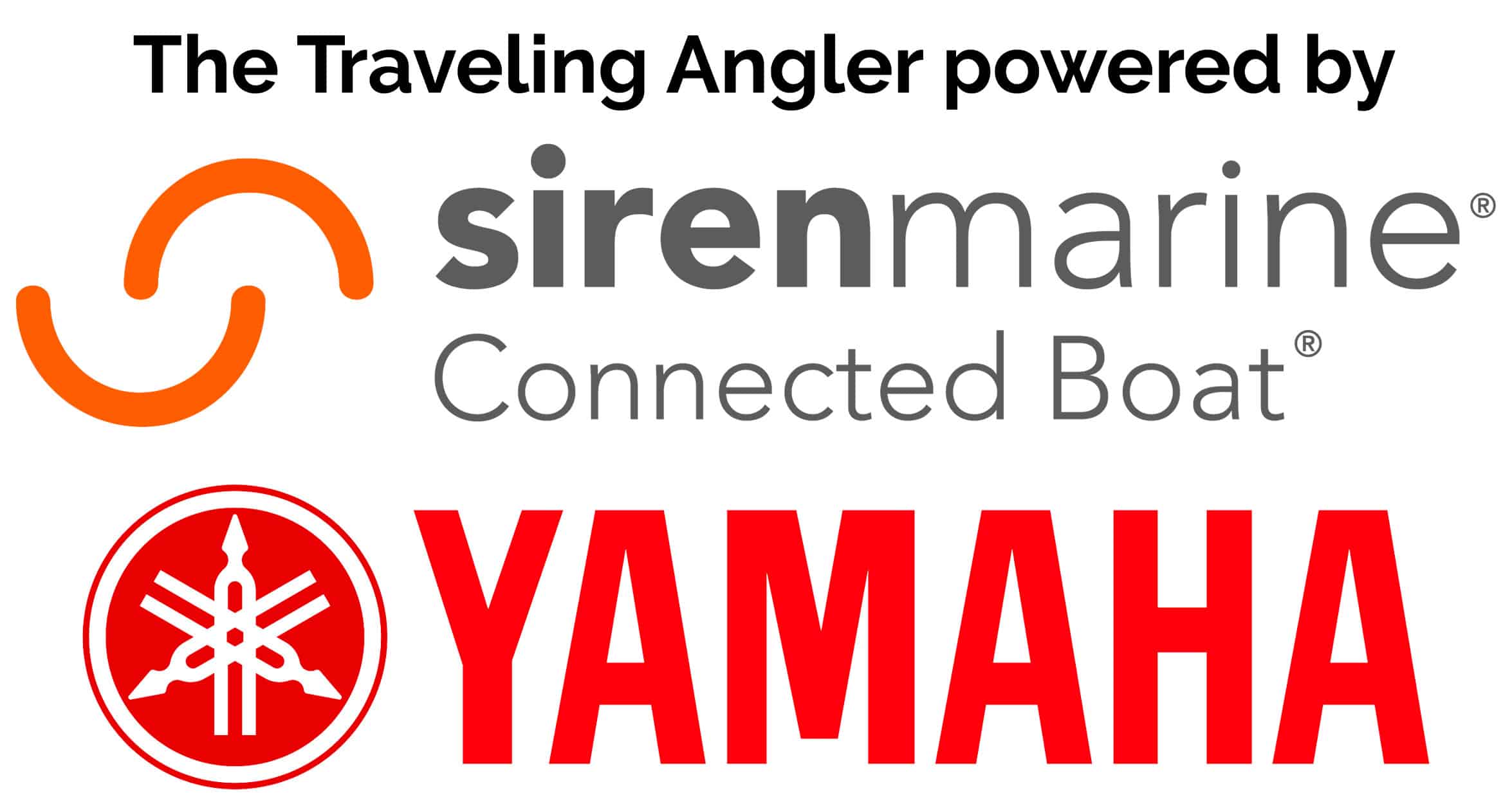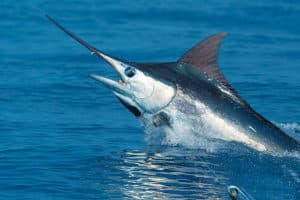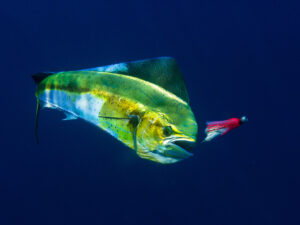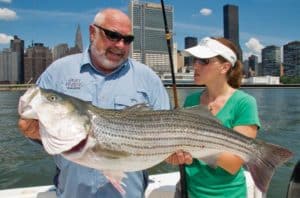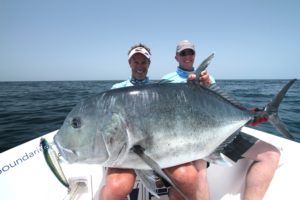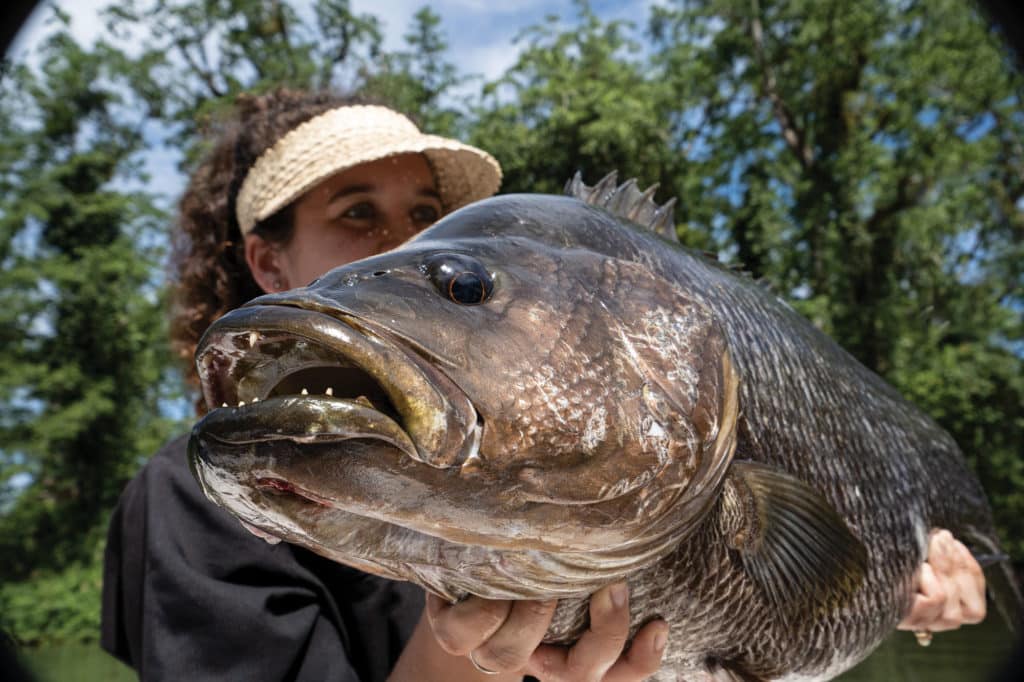
A long-awaited week in Papua New Guinea proved a good bit windier than we’d have liked. But in retrospect, I shouldn’t gripe. A couple of weeks before we arrived, a magnitude 7.6 earthquake rocked New Britain Island, its epicenter near our final destination. A couple of weeks after we departed, Mount Ulawun—also on New Britain—erupted, forcing evacuations and closing the airport for some time.
Amazingly, the big temblor was barely a blip for the usual operations of Baia Sportfishing, which was all systems go just afterward. And even the eruption of that nearby volcano failed to delay normal operations for long. I guess when an entire nation lies within the Pacific Ring of Fire, such cataclysmic events are the norm.
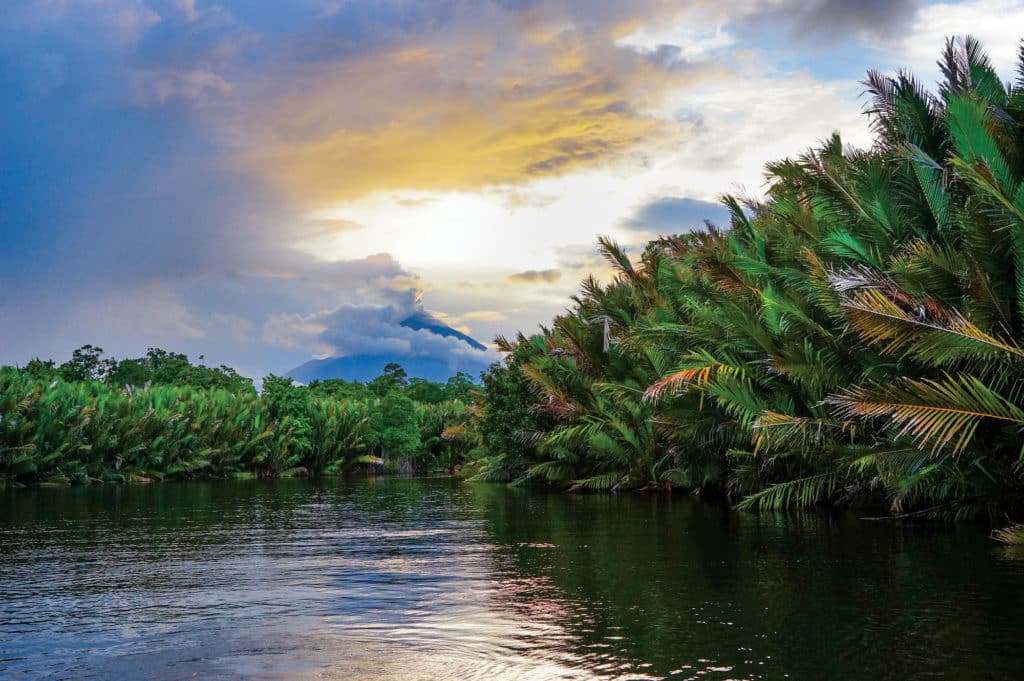
But outside of such events, and away from Port Moresby (which is also the capital city, on the main island), PNG remains a remarkable forgotten land of steaming jungles and unexplored coasts. And in these rivers, found in few other places on Earth, lurks the powerful Papuan black snapper (known locally as “black bass”). Its almost mythical reputation among anglers, along with its extraordinarily limited availability and accessibility, makes the Papuan snapper truly an ultimate bucket-list target.
A quest to check this fish off our own lists brought my amigo George Large and me halfway around the world to New Britain Island, northeast of the main island of Papua. A multitude of the rivers that cut through its rugged, verdant coast remains mostly or completely unexplored by anglers.
But we had heard that these fish can be tricky—to find, hook and, of course, land. Would we have the chance?
Delayed Reaction
We were wondering that very question while we cooled our heels in Port Moresby for an unplanned overnight. The Air Niugini flight from Brisbane, Australia—our first stop from the United States—into Port Moresby was inexplicably delayed for a couple of hours. We ended up reaching Port Moresby in time to wave goodbye to the afternoon flight to Hoskins, on West New Britain’s north coast near Liamo Reef Resort, and where the 72-foot, wave-piercing mothership Ultimate One waited. That meant we would have to spend the night in Port Moresby. Given the city’s reputation, we’d rather have avoided it. But it proved no problem. Air Niugini arranged for us to stay at a nearby, quite passable hotel, and we could catch a flight out early the next morning to join the anglers waiting to leave with us on the ship. But wait: There was no morning flight on that day. So we ended up finally reaching Ultimate One just before dark, more than a day late.
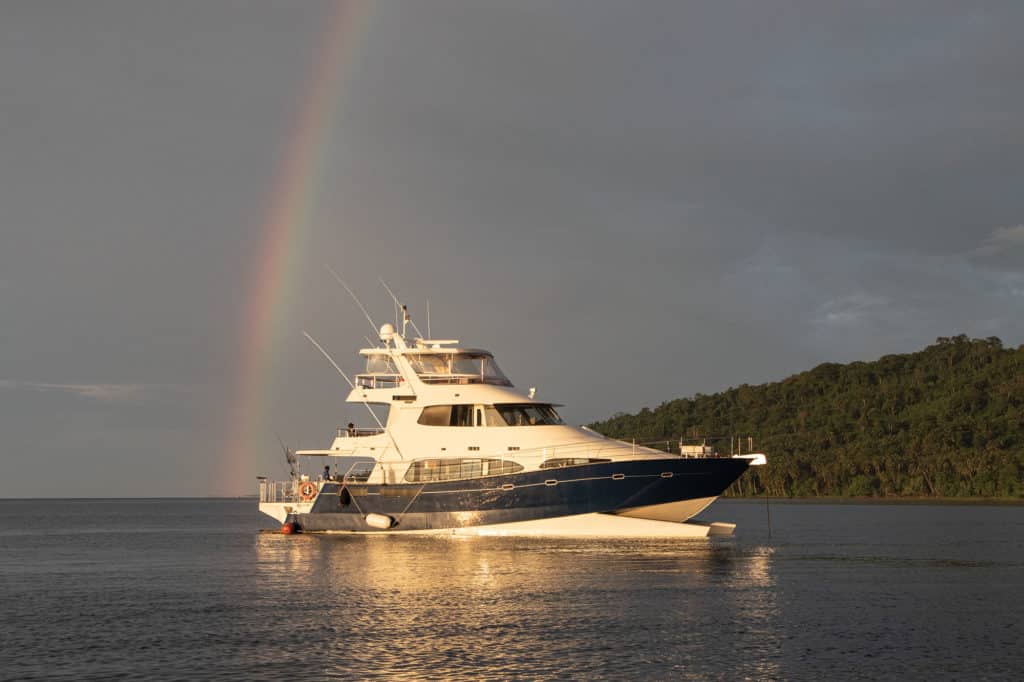
But we were there, joining four other anglers, including my friend Scott Thomas, editor of Australia’s Fishing World magazine. Large and I had time to work on our jet lag as the boat steamed northwest through the night and into the morning to reach Narage, one of the Vitu Islands, well out in the Bismarck Sea. The plan called for two or three days of fishing reefs and offshore waters, then three days back on the coast for river action.
During our 120-mile overnight journey, conditions that began in tranquil waters had become considerably more challenging, and by the time we anchored in a bit of lee near the small island, it was obvious that many of the reefs in the vicinity would be difficult, at best, to fish with poppers or stickbaits in the wind, rain and choppy seas.
So from the three small center-console skiffs (built to the specifications of Baia Sportfishing owner Riccard Reimann), the six anglers aboard mostly trolled, and did so in a limited area of reef not far from the lee of the steep, conical island.
Dogtooth Tuna and Black Bass
Despite that limitation, we discovered soon enough why Ultimate One’s captain, Rob McCullough, welcomed us to “dogtooth reef” as we loaded up the skiffs. We were also soon reminded why dogtooth tuna have a reputation for being one of the toughest fish to hang onto once hooked because the small group of anglers was repeatedly humbled by doggies, when they variously bit through leaders or main line, ravaged terminal gear or, of course, bullied their way back over a reef edge to cut us off. Despite all that, the group managed to land 10 or so over a couple of days, but only up to 60 to 80 pounds, not the 150-plus-pounders we’d have liked to have seen (and that we likely had hooked). Some wahoo got into the act as well.
We did get some chances to jig, but for whatever reason, that wasn’t terribly productive on this outing.
We left Narage a little later than planned to let the wind, now gusting to gale force, die back a bit, steaming south to the coast of West New Britain to fish the rivers. Unfortunately, conditions proved less than ideal here as well—not from the wind (which never really let up during our trip) because the rivers offered good protection, but from enough rainfall to wash a muddy outflow into the rivers. Best conditions for bass call for clear, dark water; we had opaque, cafe-au-lait water.
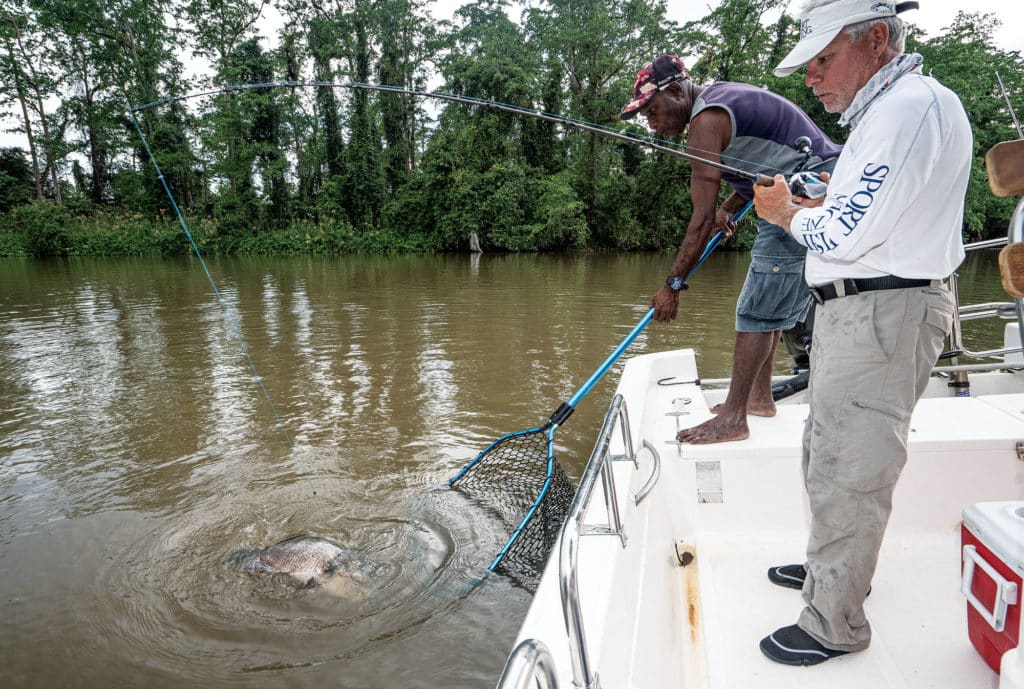
But all anglers did catch bass—both the coveted Papuan black snapper and the similar spot-tail bass (technically known as the freshwater snapper). The latter don’t run quite as large (though the record is 46 pounds) and are often found farther up in the rivers, even well above tidewater. Fittingly, the only repeat angler on this trip, Mal McCully of Naracoorte, Australia (this was his eighth trip), caught the biggest bass—a trophy-size fish upward of 30 pounds. (McCully told me he’s caught some larger; on his best trip so far he released 133 bass over four days. Yeah, the water was clear.)
McCully fishes 50-pound braid with an 80-pound mono leader. At times, even that doesn’t offer enough stopping power in the snag-filled rivers, where the water typically ranges from a few feet to 15 or so. McCully says he’s lost more big bass than he can count. Although a big fan of barramundi fishing in Australia, he says this is much tougher than barra fishing. Certainly Large and I lost our share, but we also caught quite a few bass, mostly the Papuan blacks.
A Surprise Catch and a Surprise Visit
Our best day was the last of the trip. We’d moved east to fish the Kulu River, and the water was, if not clear, at least less turbid. That allowed us to do more cast-and-retrieve fishing versus trolling. Deep-diving crankbaits proved to be the ticket, with Halco Poltergeists and Sorcerers in (not surprisingly) bright, reflective colors most effective that day—and all days—though we also caught fish on Z-Man soft plastics.
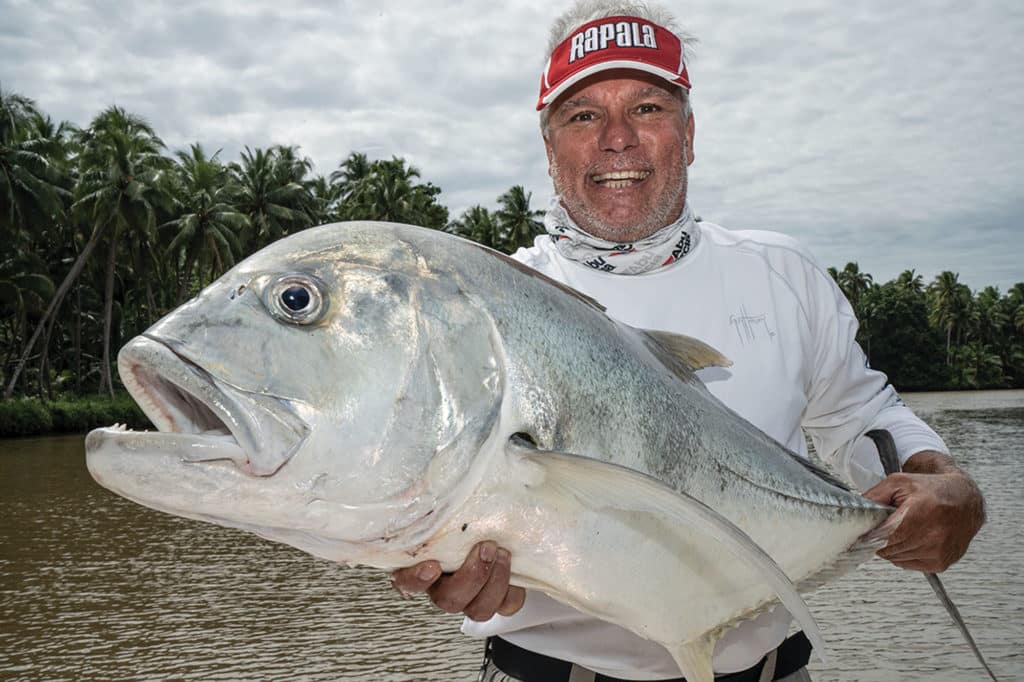
Though we focused our efforts on snapper, quite a few other species of predatory fish in these intertidal rivers grabbed our lures, and such diversity is always welcome. Most frequent among these were the aggressive “black cod” (actually white-spotted grouper), but the group also pulled in mangrove jack (similar to gray snapper of the U.S. Southeast), fingermark snapper and Pacific tarpon, as well as species more unfamiliar to me, including wolffish and Pacific sea bream. The biggest surprise, literally and figuratively, was the hefty giant trevally in the 50-pound range that Large hooked up in the shallow muddy water near a riverbank, and which at first we logically figured to be a monster bass.
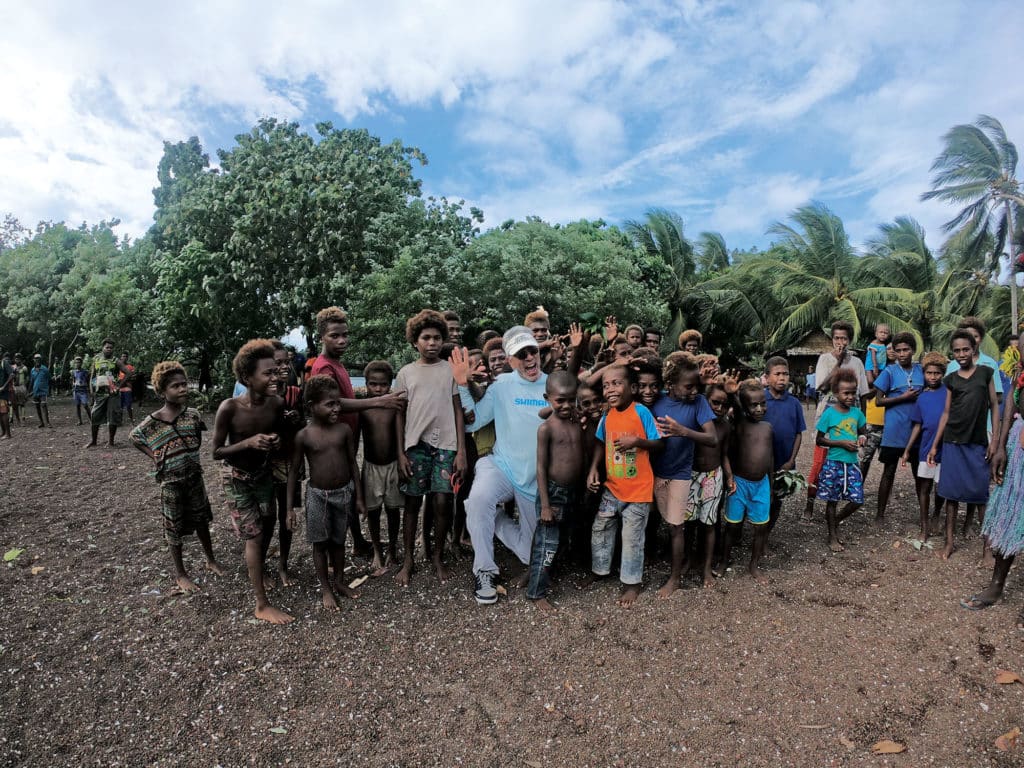
While in the rivers, we encountered the occasional native canoe—long, narrow dugouts, which often carried families that included two or more children. Beyond friendly waves or head nods, generally there wasn’t a lot of interaction, though more than once we motored up to offer a fish we’d caught, which was most graciously accepted.
Read Next: Journey To a Lost World to Catch The Planet’s Toughest Fish
In running along the coast and nearby small islands, we had passed small settlements of thatched dwellings, usually to much waving, particularly from the younger residents. On one of the outside (offshore) days that was particularly windy, we put up our rods one afternoon to join Reimann and our skiff operators for a boat ride to Goru Village on a small island. The next couple of hours provided indelible images of a people and way of life in a world entirely different from any we knew. Of course we became the center of attention, and the villagers greeted us warmly, and even put on an impromptu show. Any nervousness on our part melted away in the face of so many laughing, smiling, welcoming villagers, young and old alike. Tiana Reimann, Riccard’s daughter and manager of the trip, had come prepared with a load of illustrated books for kids and shovels—invaluable tools—for adults.
As we saw on our adventure to fish New Britain’s coastal rivers, when traveling to these headlands of the Ring of Fire, it’s best to plan for contingencies. That’s part of the challenge and appeal of fishing such remote, unsettled areas. But the chance to fish waters that seldom, if ever, see a fishing lure, and catch gamefish found nowhere outside this region makes the journey worth the effort.
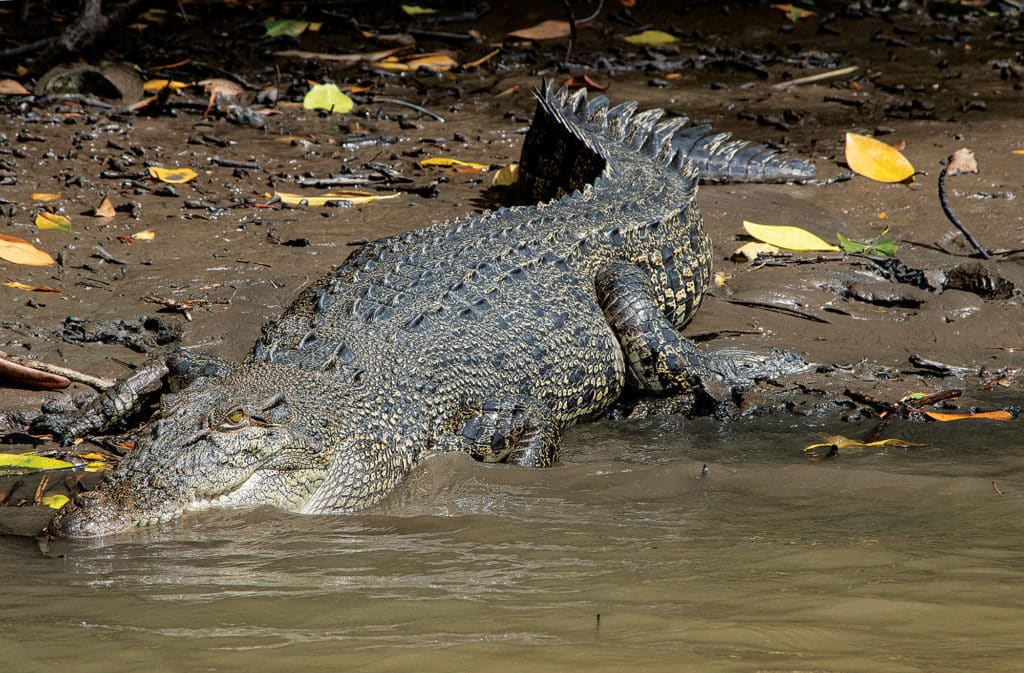
Papuan Black Snapper
More than any other gamefish, this is the species for which enthusiasts travel great distances. Their widespread moniker is “black bass,” but anyone who knows snapper can see at a glance it’s a Lutjanid, a species in the same genus as gray (mangrove) snapper and cubera snapper. Indeed, Lutjanus goldiei looks much like some cross between those two species. It’s found primarily in the rivers of PNG.
The IGFA all-tackle world record stands at 47 pounds, 8 ounces, from the Tauri River, taken on a Rapala in 2015.
So are these fish the strongest fighters in the world, per their reputation? From my experience, they are tough—damn tough. But in the reality-check department, will they outfight giant trevally or dogtooth tuna? Not likely. But the black bass wages a particularly intense, right-now, down-and-dirty battle, so either you make it (free from river snags) or the fish breaks it. I would rate the fight of a black bass similar to that of cubera snapper—and anyone who’s tried to put the brakes on a cubera snapper over a reef or rocks knows that’s a high compliment.
Planning a Trip to Fish West New Britain Island
The journey— You’ll need to fly into Port Moresby, the capital city of Papua New Guinea, typically by way of Australia, with Brisbane being the closest major international airport. From Port Moresby, you’ll fly to Hoskins on the north coast, and be met by Baia Sportfishing for an hourlong drive to meet Ultimate One. It’s best to plan so no overnight is needed in Port Moresby. The city is not known as a kinder, gentler place, but as we found out firsthand, staying in a hotel near the airport should be no problem, and the staff in shuttles and hotels were uniformly friendly and helpful. In planning flights and timing, Baia Sportfishing will assist. By the way, as I discovered the hard way, even if just transiting through Brisbane for hours en route to Port Moresby, you’ll still need an Australian visa, without which you can’t claim your bags in order to recheck them.
The facilities — The 72-foot Ultimate One is a luxuriously appointed mothership (and its ice-cold air is more than welcome each day). Trips run either six or eight nights out, and might include an emphasis on rivers, reefs, blue water or some combination. There’s also the option to stay at Baia Lodge, versus the mothership, for a variety of fishing and exploration. Fishing guides are all native (which is good); their English varies from passable to nearly fluent, and all will bend over backward for their anglers. Bring a large selection of deep-diving lures such as Halco Poltergeists.
What to expect — Well, the unexpected, to start with. But you can count on warm weather—this is equatorial with a capital “E.” Yet we agreed that it wasn’t as stifling as we’d expected, and fishing the rivers can be shaded at times. We visited in June but, because it’s almost on the equator, there’s little seasonal change. Obviously you’ll want sunscreen as well as rain gear. And strong insect repellent, but a word about that: One of our greatest surprises was the total lack of mosquitoes. I’d been taking my daily dose of doxycycline for malaria prevention, but it turned out we didn’t need it, at least on this trip. Nor were we bothered by sand flies or other biting nasties. I had also figured on dodging the sort of big, bold “salties” (saltwater crocodiles) I’ve experienced in Australia, but we saw only a few, not so large nor so bold.
For more information or to book a trip: Contact Riccard or Tiana Reimann at Baia Sportfishing via baiafishingpng.com, or by email: baiafishingpng@gmail.com.

